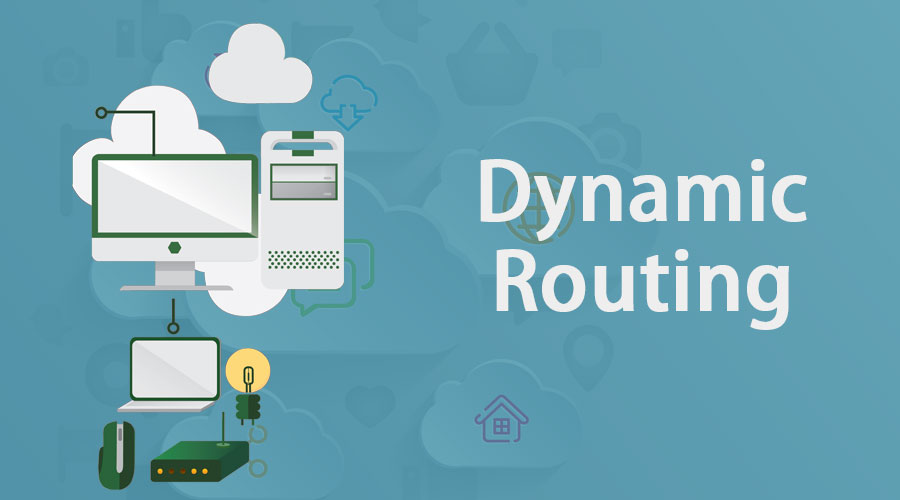Updated May 30, 2023
What is Dynamic Routing?
Dynamic Routing is a network routing procedure that facilitates the routers to pick and choose the routing paths depending on the network structure’s logical changes in real-time. This is opposite to the typical traditional static network routing. This is an automated routing technique that requires very less administration and supervision. Various protocols used in this routing method are Open Shortest Path First (OSPF), Routing Information Protocol (RIP), Border Gateway Protocol (BGP), and Enhanced Interior Gateway Routing Protocol (EIGRP).
What Can You Do With Dynamic Routing?
Dynamic routing protocol working is explained as under :
- The router first delivers and then receives routing messages over the router interface.
- Dynamic Router messages also share the information with different routers that make use of the very same protocol.
- Routers would then swap their routing information in order to discover the data regarding remote networks.
- When soever the router finds a change in the topology, routing protocol advertises that particular topology change to all other routers.
Dynamic routing is considered easy to configure on large networks, and also, it is more intuitive than static routing at a selection of the best route, detection of the route changes, and also a discovery of the remote networks.
But, since the routers always share updates, they always consume bandwidth more than it consumes in static routing. The router’s CPUs, as well as RAM, also face loads that are added as a result of protocols of routing. At last, dynamic routing is considered to be less secure than static routing.
Advantages of Dynamic Routing
Below are mentioned the advantages:
- Dynamic Routing involves more automation in the way that routing gets automatically sent to all of the other routers.
- Dynamic Routing also involves a change of notification in the way that the dynamic routing protocol has got the ability to reroute the traffic around the link, which is congested.
- Dynamic Routing involves higher uptime for the users since the routing protocol has got intelligence, and it can also react much faster; therefore, users can see higher uptime.
- Dynamic Routing also deals with greater throughput of the network since the routing protocol has the ability to calculate the most responsive network link to make use of, also users see less latency and more performance in the network.
- Dynamic Routing involves much less work for administrators as, and when the network grows, the administrator needs not to worry regarding the configuration of other routers on a network. Rather, the administrator would configure the dynamic routing protocol on a new router to talk to those routers and make them aware of the new router’s networks.
Dynamic Routing Protocols
There exist many interior gateway routing protocols, that is, IGP. These are the protocols that could be used within the network. These protocols are supported by every router and operating system of the server like Windows 2003 Server or Linux. Some of the protocols are explained as under :
1. OSPF (Open Shortest Path First)
It is a very famous dynamic routing protocol that is being used in today’s world. OSPF is also an open protocol to ensure that any router or even server operating system can run this protocol. It selects the best route by making use of cost as its metric. It is also considered a complete-featured routing protocol, and also it can be complex; however, it can also scale to any size in the network.
2. EIGRP (Enhanced Interior Gateway Routing Protocol)
It is considered a proprietary protocol for Cisco. Just for your information, just the Cisco devices make use of EIGRP. It is a completed-featured protocol, just like OSPF. It has some amazing features, but until you make sure that you are going to have a Cisco network, the use of open protocol (OSPF) is recommended. EIGRP has replaced IGRP, which was its predecessor. The metric that is needed to select the best route through EIGRP is calculated using a formula that takes into account bandwidth, reliability, delay of the link, and load.
3. RIP (Routing Information Protocol)
RIP is considered an open-source protocol. Version 2 is the latest one that you should be using today since it provides VLSM, that is, Variable Length Subnet Mask support. It is the simplest and easiest protocol of routing to configure, although it also has got lesser features than OSPF. It is restricted to routing for the network having less than 15 hops. This protocol works quite well for a small network that doesn’t think of expanding largely. Another great feature about it is that the smallest routers and firewalls generally support it.
4. BGP (Border Gateway Protocol)
BGP is considered the routing protocol of the Internet. It is also Exterior Gateway Protocol, that is, EGP which means that BGP is used by routers making decisions of routing on the Internet. If your home has a connection to the Internet, you don’t really need BGP or even need to run it. In case the router has got more than one dedicated connection, you might require running. It is a path-vector protocol that implies that it can select the best route compared to other routing protocols. BGP uses the “AS-PATH” as the routing metric and also selects the route that has got the shortest path through the entire Internet.
Conclusion
Thus, we can conclude that the routing protocols are just a set of languages that the router uses to communicate the routing information along with other routers. The main benefit of using routing protocol is its ability to get adapted to changing the network topology.
Recommended Articles
This has been a guide to Dynamic Routing. Here we discuss the concepts, advantages and what we can do with dynamic routing. You can also go through our other suggested articles to learn more –




